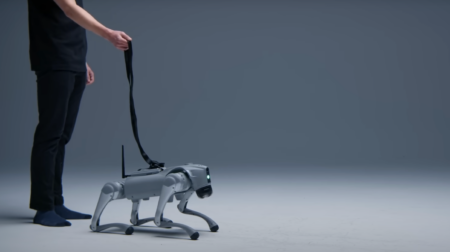Named Medusai, a new installation from researchers at the Georgia Tech Center for Music Technology, comprised of fabricated steel and eight mobile arms, can play percussion and strings with human musicians.
The robotic arms move in response to human dancers and are able to move in time with multiple human observers.
Medus.ai uses AI-driven computer vision to understand and mimic human actions, and registers its responses as snake-like gestures, music and light.
Gil Weinberg, the director of Georgia Tech’s Center for Music Technology, commented that, despite knowing it is “unsettling”, this effect is intentional.
Weinberg hoped to use the timeless Greek myth of Medusa, wherein a beautiful woman was transformed into a monster whose gaze turned onlookers to stone, to encapsulate modern anxieties about AI and robotics.
Some of the complex ideas explored by the installation include distrust and risk in robotics
“There is a lack of trust and general wariness about AI and robotics,” Weinberg said. “In the last year people have really started to understand both the promises and the risks.”
An artist statement accompanying the piece stated: “The Medusai project is an attempt to capture and reflect on the good intentions and promises of AI on one hand and the risks and dangers on the other.
“The eerie and uncanny notion of AI-driven robotic snakes following and threatening humans is balanced by the sculpture’s potential to inspire humans – musicians, dancers, museum visitors – to push the boundaries of their creativity and expression. We hope that project can help project and embody this duality to those who will experience it.”
A soft opening of the exhibition took place at Trillith Studios, Georgia, in December 2023.








